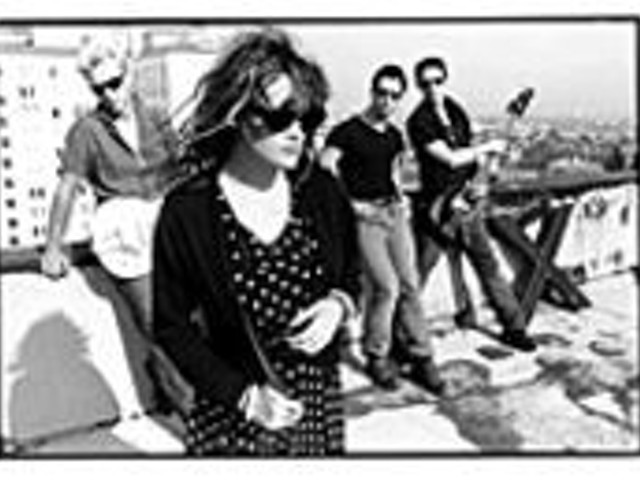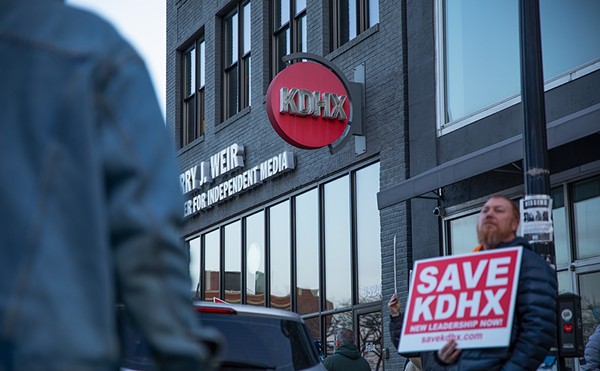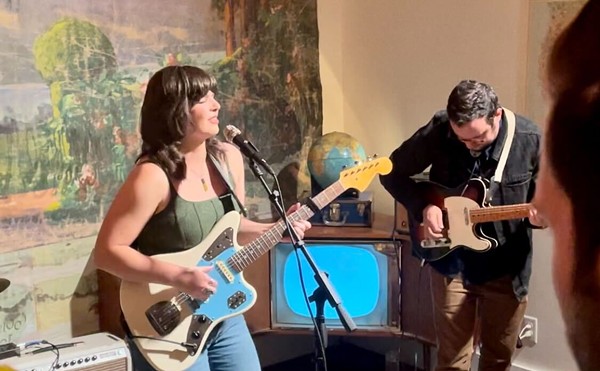The summer, with all its trappings and traditions, also brings a cacophonous plague upon the land: the package tour. Swarming like locusts, any band worth its six strings and smoke machines tries to get on one of the various tours. Tours of all shapes and sizes crisscross the continent's large sheds and amphitheaters -- outdoor venues that can be as inhospitable as they are expensive.
These tours present an interesting conundrum for the old guard, the musical Methuselahs who have survived many a season but don't have the gravitas of the Rolling Stones: How do you get people to come stand in the sun to see you -- and, more important, pay for the privilege -- when most of your fan base is more concerned about emphysema and melanoma than about smoking up and showing off their totally awesome new halter tops? The few bands that attempt to go it alone are seldom successful. Some choose to group together for their summer-go-round, as with the recent Styx/Journey/REO Speedwagon show, or the upcoming Kiss/Aerosmith juggernaut or even the ever-popular "All the Dollar-Bin '80s Hair Bands We Could Check out of Rehab and Pay in Food Stamps and Cheap Whiskey" conflagrations. It's as if they believe that by touring together they can stave off the jackals of public ennui nipping at their heels and bank accounts -- and, although presenting that much cheese and schlock in one place is surely proof of a greater evil, it's not a crime. Even the guys from Trixter need to make a living somehow.
Unfortunately for most bands, it doesn't seem to be that great of a living. Sure, it beats the nine-to-five grind, but how can the average washed-up rock star expect to support lavish homes, fancy cars, stripper ex-wives, a prodigious cocaine habit and scores of illegitimate children on the paltry thousands and thousands of dollars he can make off these nostalgia-package ventures? In light of this harsh reality, some of the more enterprising rock & roll codgers have done what most major multinational corporations have been doing for years: co-opt youth culture. Realizing the kids are more likely to spend their parents' money than their parents are, these artists started bringing younger acts on tour with them in the hopes of reaching a demographic that's perfectly willing to shell out 40 bucks to bake in a mud-and-asphalt cesspool watching bands bust out 30-minute sets.
One of the longest running and most successful examples of this phenomenon is Ozzfest. Sharon and Ozzy Osbourne started the festival in 1996, after asking for a slot on the then-red-hot Lollapalooza festival only to be told that Ozzy just wasn't hip enough. Deciding to take these lemons and squeeze 'em for everything they were worth, the Osbournes formed their own traveling extravaganza dedicated to hard rock and heavy metal. Now on its eighth trip out, the festival succeeds not because of the loyal-but-dwindling base of hardcore Ozzy fans but because of head-booker Sharon's keen eye for spotting talent on the way up. Numerous acts, such as Incubus and Godsmack, have gone from Ozzfest's side stage to its main stage and then on to sell millions of records. This year's installment is no different, with many hungry new bands making a starry-eyed début on the side stage and some returning favorites, such as Marilyn Manson, playing the main stage.
Re-emerging this year after a six-year absence is the Lollapalooza festival. During the early '90s, when the Alternative Nation was still flying its freak flag, Lollapalooza was widely considered the preeminent place to perform. But people grew up, fortunes changed and, due to lack of interest in the tour, Lollapalooza stopped in 1997. These days the only grunge associated with most Gen X-ers is on the carpet of their SUVs or in the corners of their Ikea coffee tables. Whereas recently reunited tour founders Jane's Addiction were once a quasi-mystical force of nature akin to Led Zeppelin and worshipped like golden gods, as far as the younger siblings and children of their original followers are concerned they're nothing more than Carmen Electra's boyfriend (the one who was in those Gap ads) and that guy who dresses like Huggy Bear. Arriving at the same impasse that the Osbournes did, somewhere around the corners of Old Street and Irrelevant Avenue, the members of Jane's Addiction seem to be trying to reinvigorate their once-Dionysian powers by bringing with them a stable of younger bands and a few older favorites for the summer season under the reinvigorated Lollapalooza banner. Side-stage acts include hip-hop phenom Pharoahe Monch and space-rock-turned-corporate-rock band Cave In. Sharing the main stage with Jane's Addiction is hard-rock conglomerate Audioslave and Ozzfest survivors Incubus and Queens of the Stone Age, among others.
The one band that seems to need the most help drawing somebody -- anybody -- to its shows is Metallica. After the members alienated half their fans by suing and harassing the most avid of them during the whole Napster debacle, they went on to alienate the other half by releasing St. Anger, a giant steaming turd constructed with the help of ProTools, a group counselor and lead singer James Hetfield's alcohol-detox program. Today their future looks a little grim. So, being smart businessmen, they're following the same formula as Ozzfest and Lollapalooza and organizing the Summer Sanitarium tour, which consists of Metallica and a bunch of bands almost half their age. They are changing things up a bit, though, by playing in an indoor arena instead of a shed like most of those on the summer package-tour circuit. Another difference is the skyrocketing price: General admission tickets go for $75. (This amount seems a bit rich for the kids they want to wrangle in, but they do have to pay for all the lawsuits and therapy somehow.) Summer Sanitarium, which offers only a main stage, also features Linkin Park, the Deftones and others.
Perhaps the real question should be, does this absorption of youth culture even work? In an informal poll, most of the 15- to 20-year-old people we consulted seemed apathetic, but those who did say they were going certainly weren't interested in the headliners.
"I'm definitely going to Ozzfest to see Cradle Of Filth on the side stage," said Corey Young, 18. "I'd love to see the Deftones if I could afford the tickets." Young went on to say that he wasn't interested in seeing Osbourne himself perform because he's "kinda old" and that he'd watch Metallica "just to say I've seen them."
The young women who expressed interest in attending were just as devoted to their favorite bands. "I just love Chevelle and want to go to Ozzfest to see them," remarked 20-year-old Nikitaha Cerve-Blue Eagle. When asked about high prices, she replied that she didn't care, that she'd pay anything to see the band that excited her, but she added that she wasn't really interested in seeing the festival headliner.
At least based on this admittedly anecdotal evidence, the young-old strategy seems to work, but who benefits the most? Obviously the headliners and organizers profit financially, but what about the young bands starting out? According to Josh Homme of Queens of the Stone Age, a crew not especially young but relatively new in the public eye, it's not always a mutually beneficial situation.
"We were playing to empty seats. We were like ginger to cleanse their palates," Homme said, referring to the Queens' stint on Ozzfest. "The more they hated us, the more we antagonized them. As fun as it might have been to piss off rednecks, it didn't really help our career. We probably alienated people who might have stumbled across our records casually."
It seems to be a crapshoot: For every band that jumps off the second stage to sell a million records, countless others disappear without a trace, to be replaced with a fresh pack of musicians eager to stake their claim. Needless to say, the older bands and organizers are more than happy to take whatever credibility and fan base they can get from them. Like the remora and the manta ray, the old/established act and the young/hopeful act have a symbiotic relationship, one that ensures the survival of both. It just wouldn't be summer without them.





